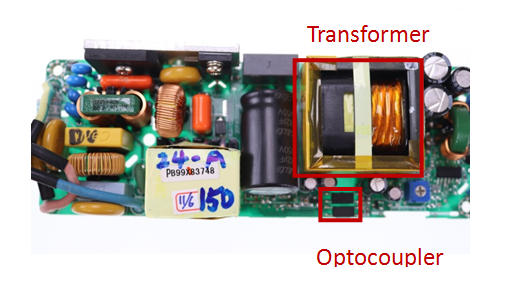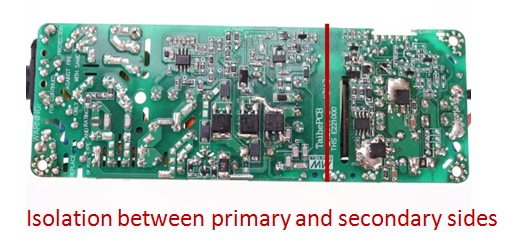Isolated or Non-isolated?
By Tony Hsieh/ Technical Service Section Manager
tony@meanwell.com
With the rising awareness of energy saving and the significantly dropping cost of LED fixtures, LED fixtures have become more and more prevalent. The core component of LED fixtures is the LED driver, which undertakes the safety and life cycle of LED lamps. According to the latest update of LED drivers safety regulations, dimming port and SELV output have to keep basic isolation, it is aimed to prevent users from connecting the dimmer to a non-SELV circuit, which can greatly reduce the risk of electric shock for users and installers. Judging from the trend of regulation updates, safety issues are gaining more and more attention. This article analyzes isolated and non-isolated LED drivers from both safety and life cycle aspects.
1. Safety:
As shown in the figure below, the primary and secondary sides of the isolated LED driver are isolated by a transformer and an optocoupler, and the insulation distance meets the requirements of safety regulations. When an abnormal situation occurs on the primary side, the high voltage will not flow to the secondary side directly, which will not cause any harm to users. It is a safe mechanism whether for users or lamp manufacturers.


A: The non-isolated LED driver itself is certainly not safe, but this does not affect safety compliance since the insulation distance and safety assessments are left for lighting fixture manufactures. As a result, some well-known luminaire manufacturers simply use the non-isolated LED driver and evaluate the safety base on the whole lighting system, the same ideas as a light bulb. With the aforementioned idea, luminaire manufacturers must particularly strengthen the insulation of the luminaire when selecting a non-isolated power supply, or the installer and user are facing the risks of electric shock due to electrical leakage. However, non-isolated LED drivers with safety regulations do not guarantee absolute safety. It is crucial to take users' condition of service and LED drivers compatibility into consideration when designing lamps to reduce the risk of electric shock.
To be honest, it is difficult to analyze the difference in the life cycle between isolated and non-isolated LED drivers accurately. The life cycle is proportional to the BOM cost, and both topologies can achieve high life cycle performance. However, most non-isolated products are used in a more competitive industry and its average life is lower than isolated products due to its short lifecycle design and weak surge tolerance. Non-isolated LED driver does not have transformer isolation like an isolated LED driver, which prevent the surge voltage from flowing to the secondary side and causing damages to LED. If the surge issue of the non-isolated LED driver is not properly handled, the LED will face the surge directly, leading lower life cycle compared to the isolated LED driver.
Finally, let’s discuss the most frequently asked questions at the LED Exhibition!
Q: Will MEAN WELL consider manufacturing non-isolated LED drivers?
A: Even though the non-isolated LED drivers possess the advantages of low cost and high efficiency and are widely applied in low power and highly price-competitive markets, MEAN WELL will not easily cut in the non-isolated LED drivers manufacturing before the safety and lifecycle issues can be thoroughly solved. As the pioneer of the standard power supply industry, MEAN WELL would rather choose to optimize the costs and sacrifice profits to provide customers with high-cost performance and Isolated LED drivers, such as the latest new products XLG / XBG / SLD series. In conclusion, MEAN WELL will continue to invest more resources on innovative products and industries instead of engaging in the price war.
